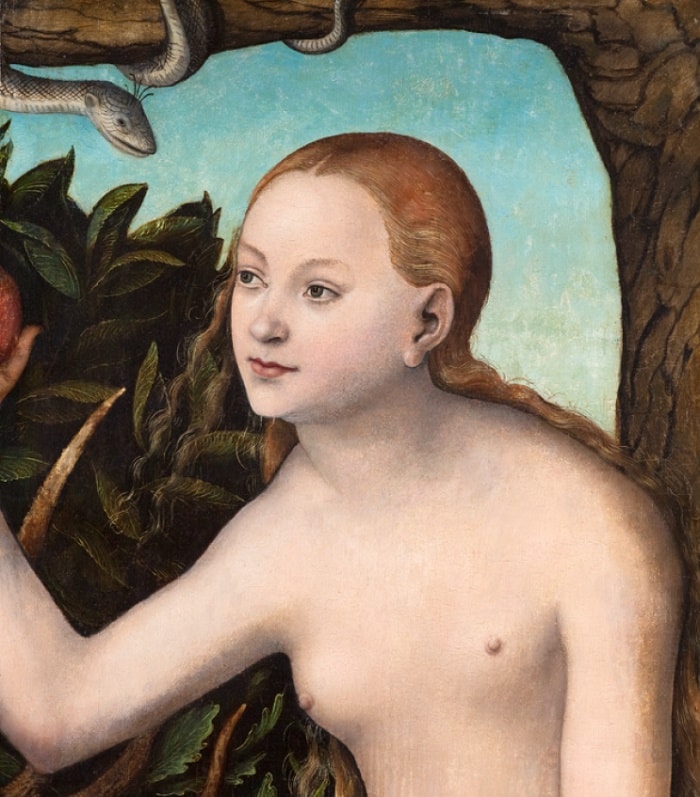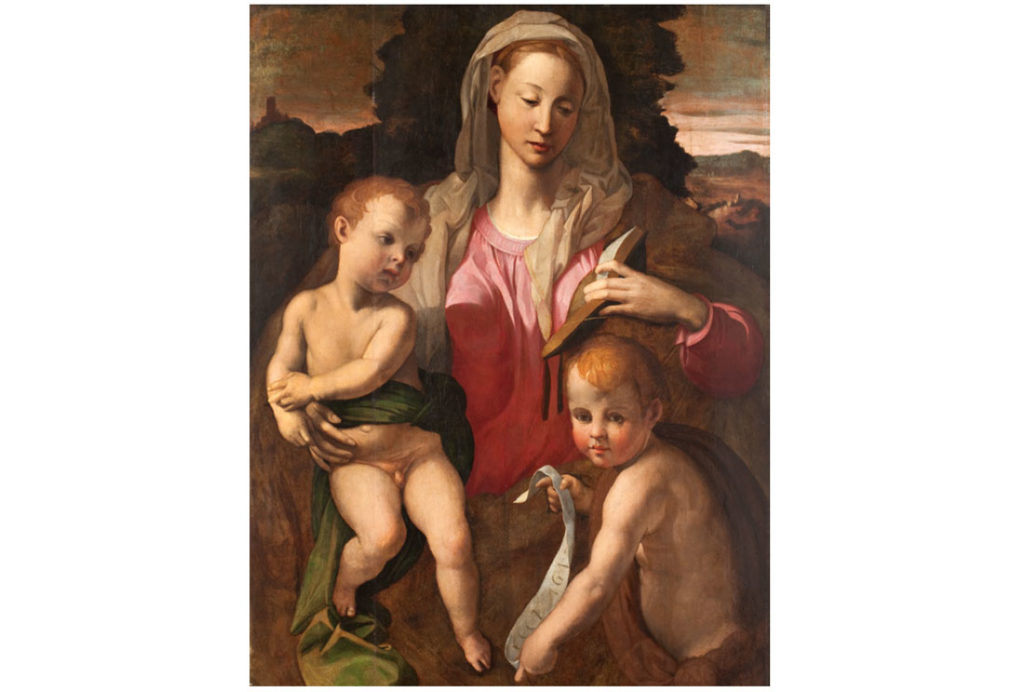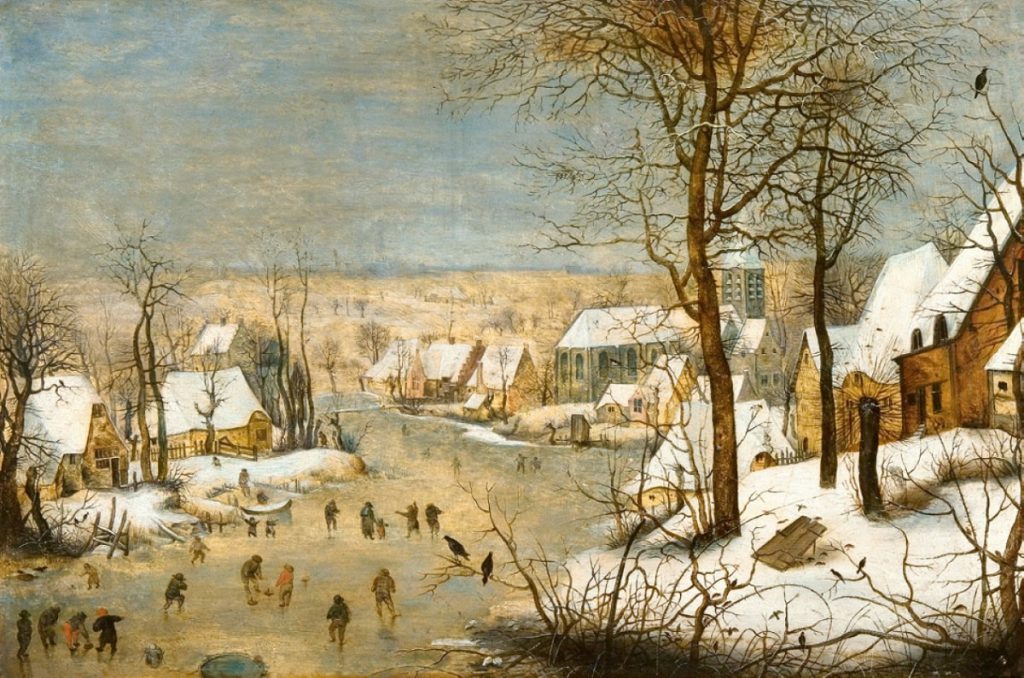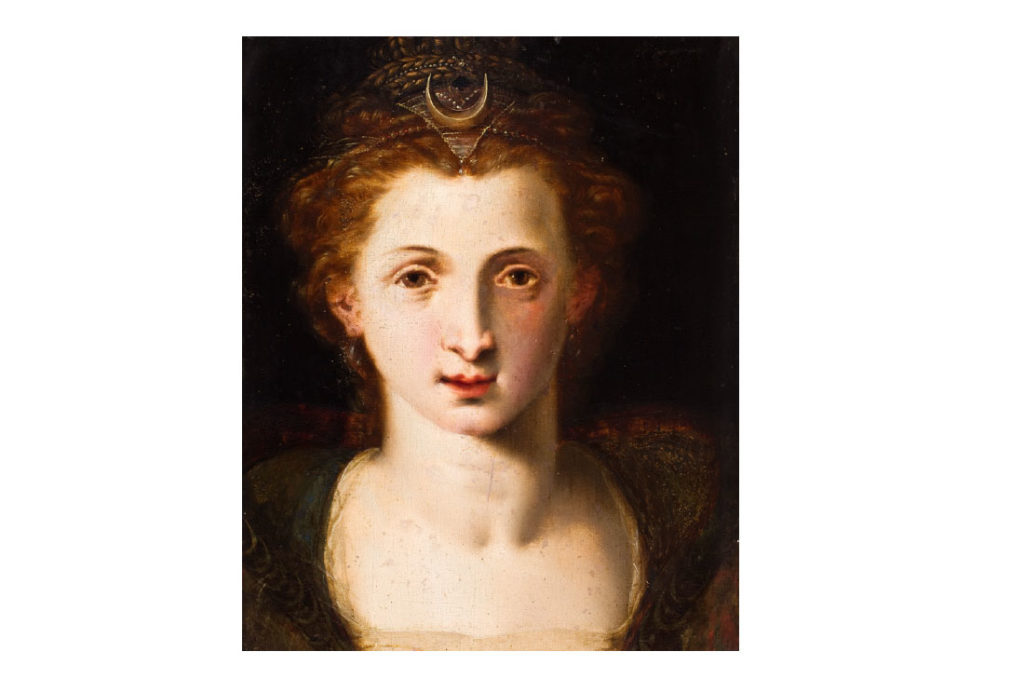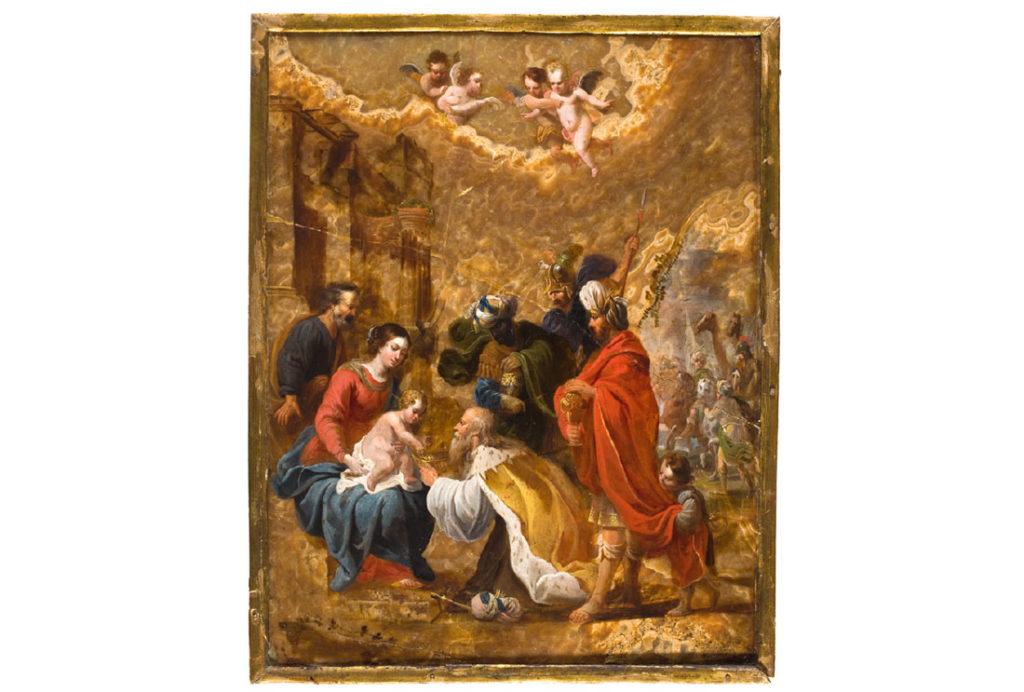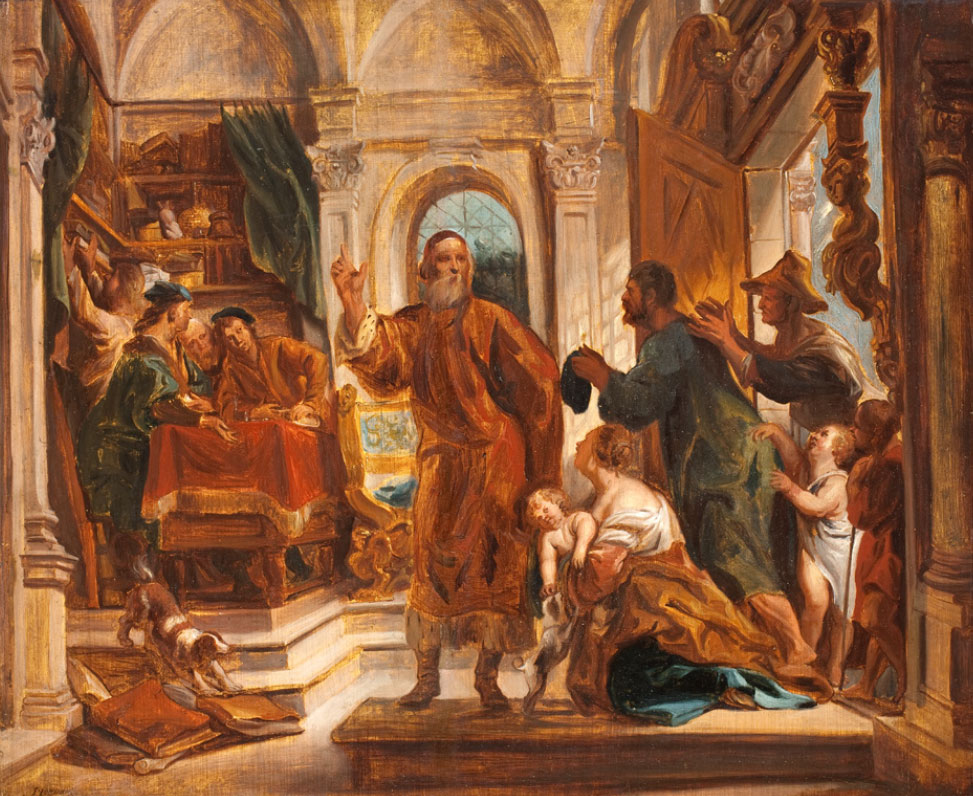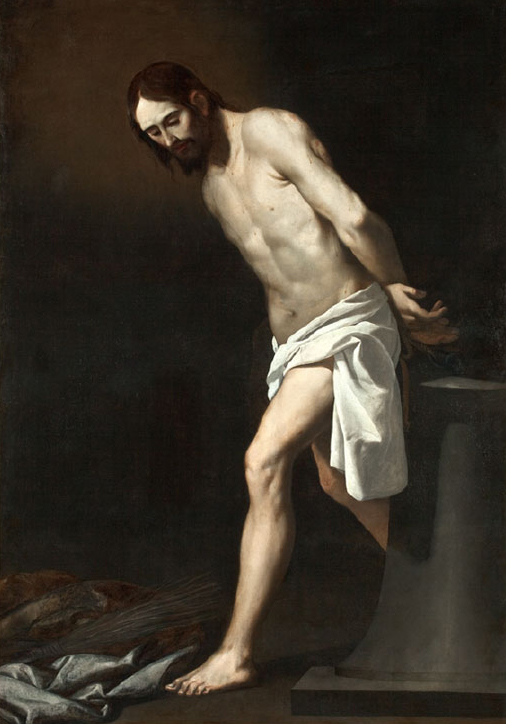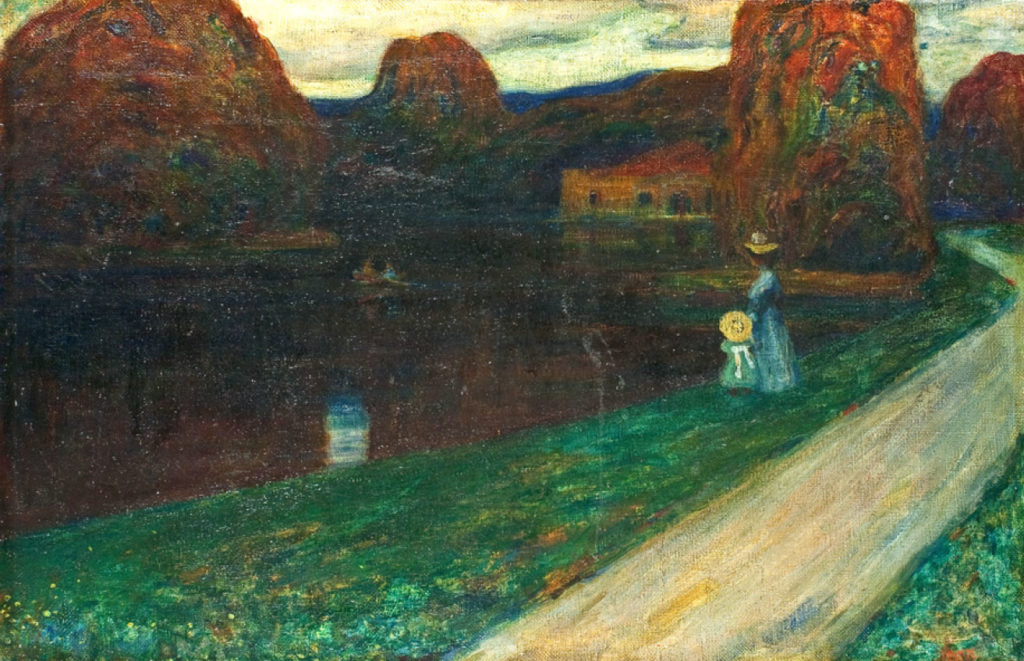The exhibition of European art is located on the second floor in the east wing of the building. It contains mostly paintings from German-speaking countries, Italy, the Netherlands, France, Britain and Spain. The display is arranged in order of subject matter and chronology and the paintings are complemented by selected examples of sculpture and furniture placed along the corridors together with other works of artistic craftsmanship.
On entering the gallery, in Room I there is a painting of Eve from around 1531 by Lucas Cranach the Elder (c.1472–1553), one of the most distinguished painters of German Renaissance. Eve, or rather the top half of her, is shown standing naked under the tree of the knowledge of good and evil in the Garden of Eden, where the grey coiling snake placed above to the right symbolizes Satan the Seducer. The viewer may come to the correct conclusion that the picture was not properly composed since Eve’s hand, painted to the left, is surprisingly cut off. In fact the painting constitutes only a part of a much larger composition. The original picture featured the entire figures of both Eve and Adam, however in the early 17th century the two fragments showing their torsos were cut out and completely repainted to become a pair of bourgeois portraits. It was only when the pictures arrived in the museum collection and were the subject of the thorough conservation procedures that the discovery was made of the existence of original paintwork hidden underneath the later additions. After the top layers were removed (in 1933–1935), the restorers finally saw Eve and, in the other picture, Adam. This example only confirms that the fate of works of art may often be full of surprises.
The true masterpiece in the collection of Italian painting is the picture of Madonna with the Child and St John (1530) by Angolo di Cosimo di Mariano Tori, known as Bronzino (1503–1572). The artist was a leading exponent of Florentine Mannerism, who usually worked at the court of the Medici, painting mostly portraits as well as works on religious and mythological subjects. The centre of this fairly large canvas features Mary reading while she supports little Jesus with her right hand. In the bottom right side of the picture the painter placed St John, later on referred to as the Baptist. The Saint holds a white scarf with the writing “Ecce Agnus Dei” (Lat. “Here is the Lamb of God”). The image of Mary and the Child accompanied by St John was fairly widespread in the art of Italian Renaissance, for example in the paintings by Rafael Santi. Bronzino’s composition is arranged in the visible shape of a pyramid marked out by the three figures. In the 19th century the picture was completely repainted and its present appearance is the result of restoration conducted in 1973.
In Room II there is another masterpiece from the collection of the National Museum in Wrocław, Winter landscape with skaters and a bird-trap by Pieter Brueghel the Younger (1564/65–1637/38). The picture, dated around 1600, depicts a view of a Flemish village, sometimes identified as the Brabant village Pede-St Anne near Diepeck (now Belgium). The church spire and roofs of houses in the background are thickly covered with snow. In the foreground, the villagers indulge in carefree games skating on the frozen river, while to their right the bird trap from the title is set. Brueghel’s painting was intended as a serious warning for the viewer. It carries a clear message about danger which threatens not only the birds (which die crushed in the trap) but also the people (ice may crack under them), aptly put in a Latin phrase about human life prone to slipping, Lubricitas vitae humanae. The workshop of Pieter Breughel the Younger painted as many as 127 versions of the same view, the so-called workshop replicas differing only in a small detail, which only proves the great popularity of that scene in the 16th and 17th century.
A small painting by the famous artist from Antwerp, Frans Floris (1519/20–1570) can also be seen in the same room. Portrait of a girl as Diana (c. 1550) features a torso of the antique goddess of the hunt. The model wears on her head an ornate tiara with a moon motif – an attribute of Diana. Her pale face is additionally lit with strong light coming from the left, which creates an intense effect of the play of light and shade. The painting must have served as one of the standard models for portraits (called ‘tronies’), which were used by Floris when painting various figurative compositions, therefore it is not surprising that the same girl appears in his other works, for example as a daughter of Lot in the picture dated 1552 from the Hermitage in St Petersburg.
Recently the collection of the National Museum in Wrocław was further expanded by the arrival of a fairly small painting of St Ivo Supports the Poor painted in 1645 by Jacob Jordaens (1593–1678), a brilliant artist from Antwerp. The picture is in fact a sketch for a much larger painting on view in the Royal Museums of Fine Arts [Fr…] in Brussels. The central figure is St Ivo (1253–1303), a judge from Rennes and the patron Saint of Lawyers. He is depicted in the middle of a group of the poor who enter his office asking for his help (three adults and three children). Originally the painting belonged to the Cistercians in Krzeszów, and after the secularization of the monastery in 1810, it was transferred in 1815 to Wrocław to the newly created Royal Museum of Art and Antiquities [Ger…] Unfortunately it disappeared in the aftermath of the Second World War, most likely stolen in 1946 from the depository in Kamieniec Ząbkowicki, where during the war the artefacts from Wrocław had been evacuated. However in 2008 the painting reappeared among the objects to be auctioned at Sotheby’s and was at that point identified as part of the collection from Wrocław. Owing to Polish diplomatic efforts, in 2015 the picture was returned to the National Museum in Wrocław.
The painting The Tribute of Three Magi (c. 1640) by David Teniers the Elder (1582–1649) is exhibited in the same room. The artist chose as the support a rather unusual material, a slab of marble. He used in a brilliant way the naturally uneven colouring of the stone, which in the top part resembles clouds and at the same time provides a background for the scene. The three Kings (Magi from the East) can be seen in the centre of the composition offering gifts to the Baby Jesus seated on Mary’s knee. The painting by Teniers, an excellent Flemish artist, amazes the viewer with the whole range of the applied illusory effects. It is difficult to tell which of its parts are painted and which are simply the natural support (marble). The Tribute of Three Magi was commissioned by a wealthy art collector Daniel Rindfleisch, who probably lived in Wrocław. Later on it became part of the collection owned by Albrecht von Sebisch, the architect responsible for designing the Churches of Peace in Świdnica and in Jawor.
In Room VI there is a large painting of Christ at the Column by Francisco de Zurbarán (1598–1664), one of the greatest Spanish painters of the 17th century. In the picture, dated c. 1661, the artist showed the martyred Christ tied to a low whipping post placed to the right. His bent down, strongly arched body emanates great suffering. The lit-up pale figure of Christ remains in strong contrast with the very dark, practically black background. There is a clear reference to the unique artistic effects of Caravaggio, who used to absolute perfection such exceptionally intense contrasts of shadow and light. Zurbarán, mostly renowned for his religious paintings infused with the Carmelite mysticism, from 1634 had also close ties with the royal court in Madrid, the workplace of his famous friend Diego Velázquez.
Among the best examples of French painting in the collection of the National Museum is Portrait of a Boy (c. 1735) by Jean Baptiste Siméon Chardin (1699–1779). The artist, considered one of the greatest painters of the French Rococo, painted mostly scenes from the contemporary everyday life. The oval portrait of a boy reveals the excellent technical skills and refined sense of colour of the artist. The viewer is faced with a slightly absent, yet self-confident gaze of a boy, aged about ten. His elegant clothes and a powdered wig suggest aristocratic background. In accordance with 18th century fashion, the boy is dressed in a white shirt with a jabot, patterned waistcoat and tightly fitting justaucorps (a type of long jacket with wide cuffs), hence he is also Chardin’s masterly study of a Rococo dandy.
Another valuable work in the collection is the picture Evening by Wassily Kandinsky (1866-1944) painted in 1902-1903. This world-renowned artist is generally considered to be the author of the first abstract painting (in 1910). However his Evening comes from the early phase of his painting career (in Munich), when the artist was clearly influenced by Secession Symbolism and proto-Expressionism from the circle of Edvard Munch. The picture, displayed in the last room of the gallery, features a view of a lake with trees growing around it, and the outline of mountains in the furthest distance. To the right of this composition there is a wide path and a woman with a small girl (a mother and her daughter) who strayed from it to walk down to the lakeshore. Both look into the distance, towards a couple in a boat. The meandering, sinusoidal path which goes out beyond the edge of the picture seems to be a metaphor of human fate. This atmospheric work by Kandinsky is also infused with the aura of melancholy and undefined nostalgia. The painter included it among the works which he described as ‘landscapes and romantic compositions’.
